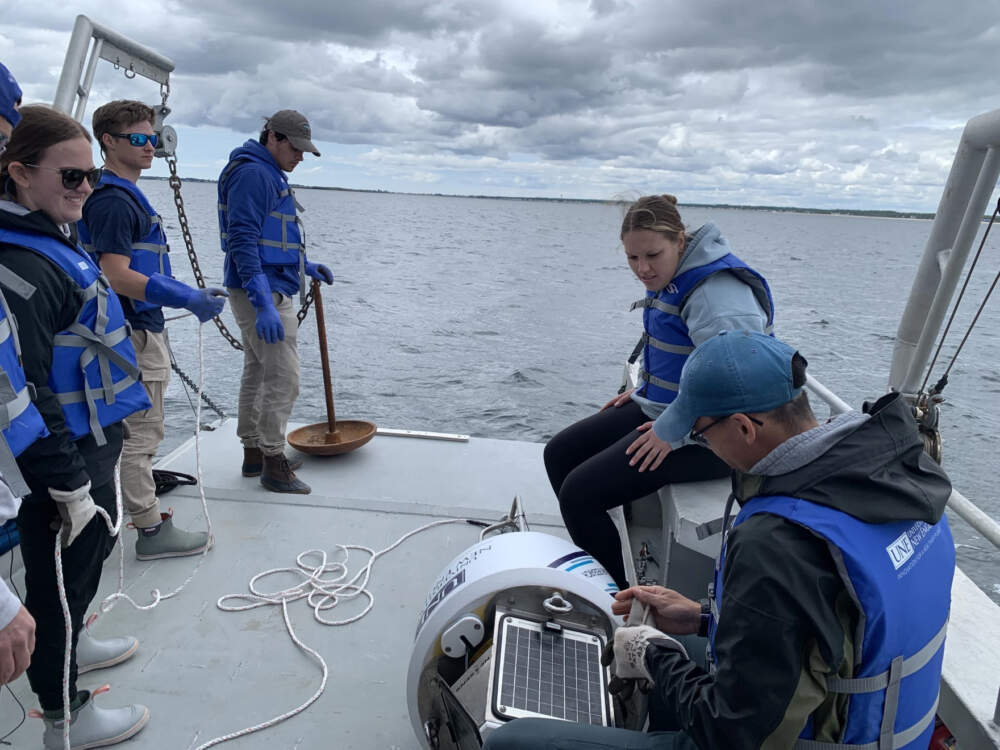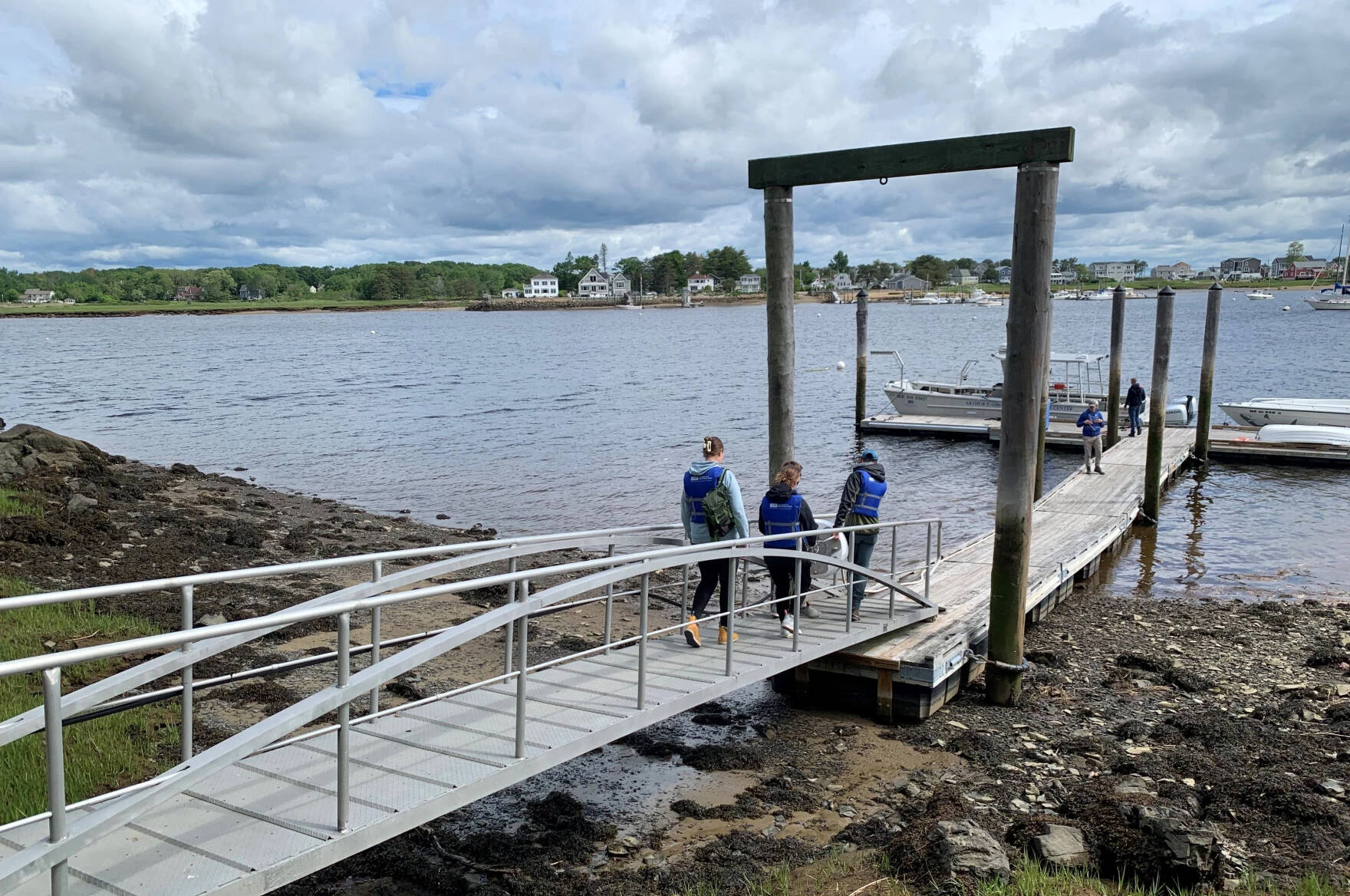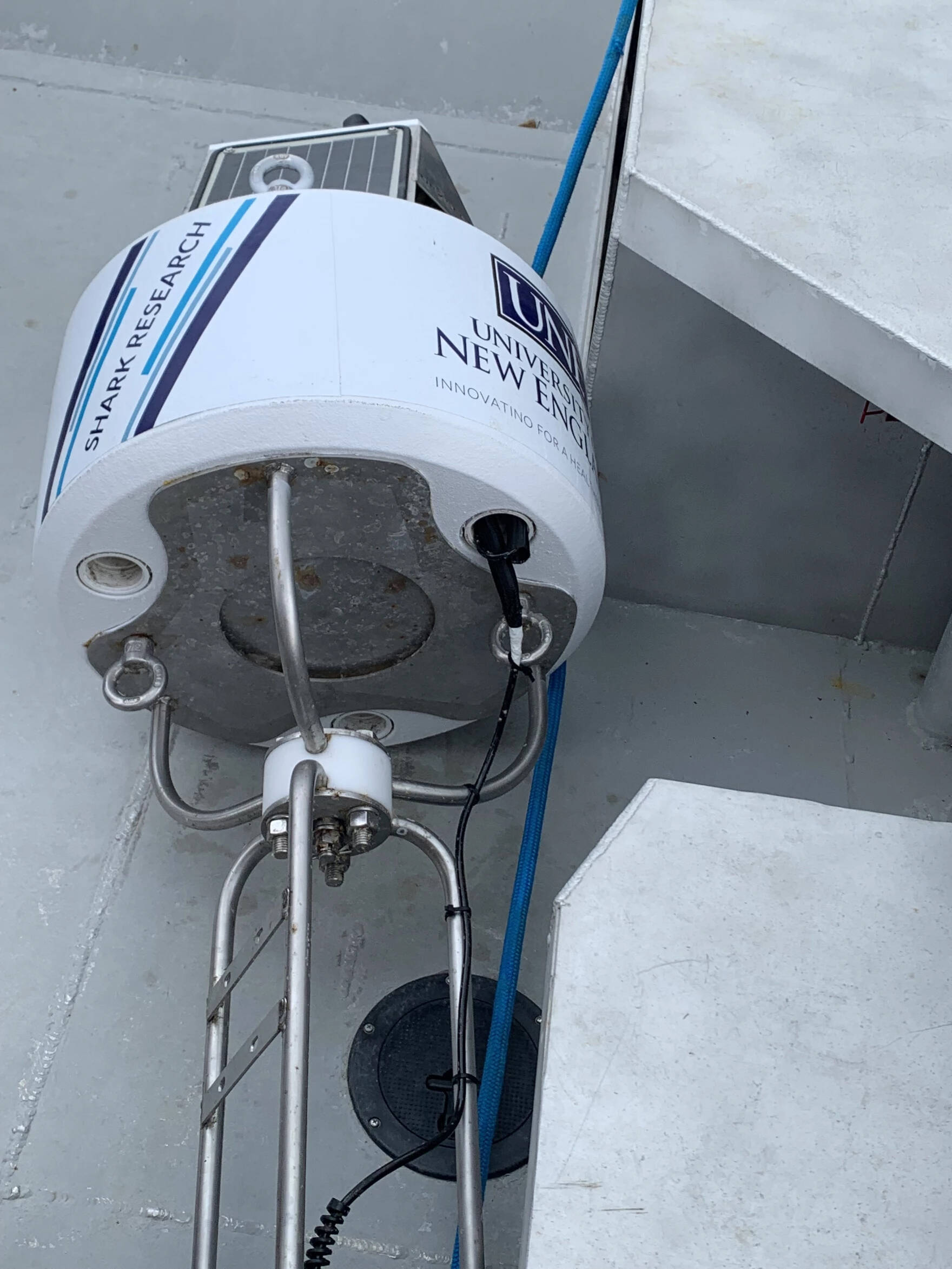Advertisement
New England college students experiment with buoy to track white sharks in real time

Ever since a fatal attack in Harpswell, Maine, two years ago, there's been growing interest in the study of white sharks in the area's waters. Researchers are trying to better understand their movements and behavior, so that lifeguards and public safety officials can respond if a shark is spotted near shore.
Earlier this week, a team of students from the University of New England found a break in the rain to set off from the school's research dock along the Saco River.
A large white buoy with solar panels on top is strapped tightly to the floor of the boat. It's equipped with an acoustic telemetry device that can listen for the presence of white sharks that have already been tagged by researchers on Cape Cod. The buoy's sensors are connected in real time to the "Sharktivity" app, developed by the Atlantic White Shark Conservancy based in Chatham, Massachusetts.

Together, they're working with a team from Massachusetts Marine Fisheries and the Atlantic White Shark Conservancy, which tag the sharks each year from Cape Cod Bay, and the state of Maine, which collects data on any sharks spotted along the coasts.
According to state data, the Maine Department of Marine Resources confirmed 44 white shark sightings last year, but only two were detected in real time. Most others were reported by witnesses who saw a shark preying on another animal or spotted signs of a shark bite. Both the university and the state have also deployed passive receivers in Maine's coastal waters, but they only provide notifications of a shark detection after the fact.
"We're hoping that with the data that we have for these three years and maybe moving into a fourth year, we can start to get some patterns and get a better understanding of the shark behavior," said John Mogan, a university marine sciences professor who is leading this research.

His team deployed this same buoy near a similar spot last summer, which detected one shark in Saco Bay. Mohan said Maine's rocky coastline makes it difficult to choose the best places to deploy these devices, but he and his students are betting that this location — just a bit deeper than last summer — is the right place to detect any sharks headed toward shallow, sandy water.
"[It's] very close to where there's a lot of public in the water, so the idea is if you get a detection, it'll help inform public safety officials such as lifeguards," Mohan said.
When the students have reached their spot, the boat stops, and the group begins to lower the buoy into the water. To test the receiver, Mohan throws out another, much smaller buoy that has transmission device attached to it. "It basically simulates a tagged shark," he explained. "And now it's trying to hear the signal."
After a few minutes, the simulated shark is detected.
Now that the buoy has been deployed, Mohan and his students said the real work of monitoring white sharks for the summer can begin in earnest. The Maine Department of Marine Resources has a second monitor-equipped buoy that's placed farther up the Maine coast near Popham Beach, which also provides real-time notifications.
This story is a production of the New England News Collaborative. It was originally published by Maine Public.